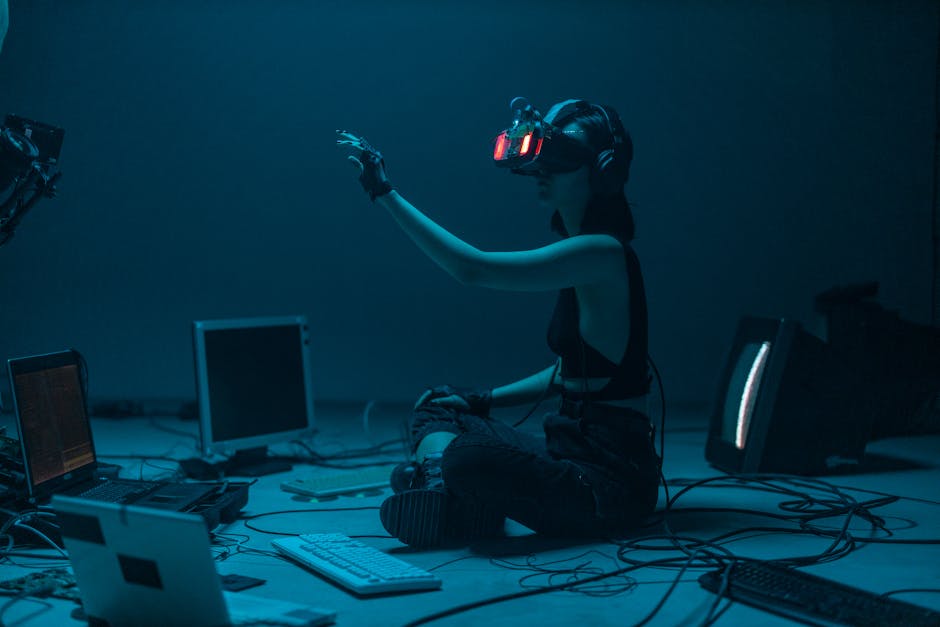Introduction: VR Isn’t the Future—It’s the Now
VR has finally passed the phase of being a cool tech demo. It’s now a serious slice of the gaming industry—growing, steady, and pulling in both players and developers. In the past 12 to 18 months, we’ve seen hardware become more accessible, games more polished, and player bases more sticky. Headsets have gotten lighter, more affordable, and easier to set up. Developers are no longer guessing what works—they’re building with purpose.
Game engines and dev tools are better optimized for VR than ever, making it less risky for indie studios to jump in. Meanwhile, big studios aren’t just experimenting anymore—they’re dropping flagship titles into VR ecosystems. And those titles are getting played.
This convergence of better tech, clearer demand, and design maturity means VR isn’t on the sidelines—it’s on the main stage.
Key Technological Leaps Driving VR
A lot has changed under the headset. In just a short time, VR hardware has gone from bulky and intimidating to sleek and approachable. Headsets are getting lighter, cheaper, and, most importantly, wireless. That shift alone makes it easier for casual gamers to dive in and stay longer, without the tangle of cables or hefty price tags that used to gatekeep the experience.
On the backend, bump-ups in graphics processing mean smoother gameplay and fewer hiccups that break immersion. Frame rates are more stable, rendering is faster, and you’re less likely to feel motion sick mid-match. It’s not perfect, but it’s a serious step forward.
Haptics and motion tracking are also leveling up. We’re not just talking about basic rumble anymore. Full-body tracking and dynamic response systems are pulling players deeper into the action. Whether it’s the swing of a bat, the pull of a bow, or the brush of wind—VR is inching toward sensory realism.
Cross-platform compatibility is another quiet revolution. Games and apps are starting to work across headsets, ecosystems, and hardware brands. That opens the door for more players, more connections, and less friction getting into a title, regardless of gear. In short, access is becoming less about the brand you bought and more about the content you want.
The tech isn’t flawless yet, but the gap between “experimental” and “ready for prime time” is closing fast.
Major VR Game Titles Making Waves
VR has matured past gimmicks—it’s producing some genuinely standout games that can hold their own across the wider gaming landscape. In the last year, titles like “Horizon Call of the Mountain,” “Half-Life: Alyx,” and “Among Us VR” have set the bar for what immersion really means. These games don’t just translate 2D experiences into 3D—they lean into the format, building moments that couldn’t exist outside a headset.
“Horizon Call of the Mountain” pulled players straight into the vast and vertical landscape of the Horizon universe. Unlike its flat-screen predecessors, this VR installment made climbing feel physical and required actual head movement and spatial awareness. It’s no longer just point-and-click; it’s reach-and-balance.
“Half-Life: Alyx,” while not brand new, still stands as a benchmark. It proved that AAA polish and deep, engaging gameplay are possible in VR. It’s one thing to hold a crowbar in your inventory; it’s another to feel like you’re actually swinging it around a dark, cramped corner.
Then there’s “Among Us VR”—a serious upgrade in chaos and comedy. The original formula was fun, but placing it in a 3D space? That changed everything. It’s social deception fully embodied.
In terms of genre, horror is having a moment. There’s something about the claustrophobic, up-close tension of VR that suits it way too well. Rhythm games haven’t gone anywhere either—”Beat Saber” remains a VR gateway drug, and titles like “Pistol Whip” keep leveling up the format. Simulators also continue to evolve, with flight and racing sims delivering cockpit experiences that rival real-world gear.
If you’re still thinking VR is a novelty, these games should change your mind. They’re not mini-experiences anymore—they’re full, fleshed-out worlds designed for depth and presence.
How VR Is Reshaping Game Design
Game design in VR isn’t just a port job anymore. Traditional mechanics—like button-mashing combos, static menus, or auto-aim assists—often fall flat when you’re inside the game world instead of looking at it through a screen. Being present in a virtual environment changes not just how players interact, but how developers have to think.
Embodied gameplay is now the bar. That means using your hands, your head, your whole body to play. Actions like ducking behind cover, physically reaching out to grab objects, or navigating space in intuitive ways are at the heart of modern VR design. This shift demands more than mechanics—it’s about spatial storytelling. Where you place objects, how environments unfold as you move through them, and what the player senses all carry narrative weight.
But designing for presence comes with real friction. Motion sickness is still a hurdle, especially in fast-paced or first-person games. Some players just can’t stomach the disconnect between visual movement and physical stillness. Interface design also gets tricky: the old HUD doesn’t work so well when it’s floating awkwardly in your face. Developers now have to find cleaner, non-intrusive ways to communicate information—think diegetic cues, wrist-mounted menus, or tactile feedback.
VR is forcing designers to drop old crutches and build from a different foundation. The payoff? A better, more immersive way to play—but only if you get the fundamentals right.
Monetization & Market Growth
Virtual Reality isn’t just evolving gameplay—it’s reshaping how games make money. The old model of one-time purchases is fading. In its place, we’re seeing a shift to recurring revenue and deeply personalized content.
Subscription services like Meta Quest+ are leading the way. Instead of paying for individual games, players get access to a rotating library—think Netflix for VR. For developers, this means more predictable income. For players, it lowers the barrier to trying new experiences without buying them outright.
Bundled experiences are also catching fire. Studios are packaging their games with bonus content—music tracks, behind-the-scenes environments, or early access to sequels. It’s not about just selling a game anymore—it’s about selling a world. With in-app customization options, like avatar gear or environment skins, developers are tapping into microtransactions that feel personal, not pushy.
Live events are another monetization layer. VR concerts, competitive eSports matches, and one-off story events are creating communal moments worth paying for. These events blur the line between game and platform, turning VR spaces into full-blown entertainment hubs.
This monetization shift isn’t just a clever grab for cash. It’s a sign that VR is learning from mobile, streaming, and social models—and adapting fast.
The Developer Perspective
Making a VR game isn’t the kind of project you knock out over a long weekend. Development is intensive—time-wise, cost-wise, and team-wise. VR isn’t just about building a game; it’s about crafting an experience that has to feel real, move smoothly, and keep players both immersed and physically comfortable. That means more time spent on physics, haptics, interface ergonomics, and bug testing than in traditional game builds.
Most developers lean hard on engines like Unity and Unreal, which have grown their VR feature sets significantly. Unity remains a go-to for indie devs who value flexibility and speed. Unreal, with its visual fidelity and Blueprint system, tends to be favored by teams pushing for more cinematic VR. Both are solid—but both carry a learning curve that doesn’t take kindly to shortcuts.
While larger publishers focus on polished flagship titles, indie studios are doing some of the most interesting work in the space. Teams like Stress Level Zero, Fast Travel Games, and Owlchemy Labs are experimenting with mechanics and interaction styles specific to VR, not just porting flat-screen logic into 3D space. They’re nimble, boundary-pushing, and setting the tone for what’s possible.
Building in VR takes more than coding chops—it’s a whole different mindset. For devs willing to invest, though, the payoffs are getting bigger.
Barriers Holding VR Back
Not everything in VR land is smooth immersion and game-changing novelty. There are still a few stubborn bumps in the road—and they matter.
First, price and access are hard walls for many players. Even with headset prices inching down, full setups still cost more than most consoles. And we’re not talking about a casual drop in the cart—VR sometimes demands a PC upgrade, extra space, or both. For all the hype, a lot of potential users are stuck watching from the sidelines.
Then there’s the user experience. Some headsets offer slick onboarding and stable performance. Others? Not so much. Variability in hardware quality, awkward UI design, and spotty comfort levels mean that a seamless VR experience isn’t guaranteed. It’s not plug-and-play yet—not for everyone.
Finally, genre fit is a real limitation. Fast-paced shooters and rhythm games work great in virtual space, but slower story-driven games, deep strategy titles, or complex RPGs? They still shine brighter on flat screens. Not all formats need full immersion, and forcing it can feel gimmicky.
VR has momentum, yes—but until these barriers start to crack, growth will be less rocketship, more steady climb.
Looking Ahead: What’s on the Horizon
The line between virtual and augmented realities is starting to blur, and 2024 is the year it gets serious. With the release of Apple Vision Pro and upgrades across devices from Meta, HTC, and others, the hardware’s catching up to the hype. Beyond games, creators and devs are exploring mixed reality as open terrain—a space where reality enhancement and full immersion can coexist. Expect more games that slide between your living room and a constructed world without a hard cutoff.
Social VR is also leveling up. Multiplayer modes are getting smarter—not just letting you play together, but making it feel like you’re occupying the same digital space. Voice proximity, shared-object interactions, even subtle avatars that breathe and blink—these touches are pushing immersion farther than ever. And with this comes growth in “hangout-first” games, where killing time with friends is the game.
Then there’s the combination of eye-tracking and AI. This is the wildcard with big upside. Eye-tracking allows for foveated rendering (which boosts performance), but also brings AI-driven NPCs that react to your gaze or movement. That’s not a gimmick—it’s a new kind of storytelling. We’re talking about spaces that notice you, characters that feel more alive, and gameplay that adapts in real-time without menus or button presses. What feels like sci-fi now is quietly becoming baseline.
Final Thoughts: VR’s Place in Gaming’s Evolution
VR isn’t a novelty anymore—it’s a permanent chapter in gaming history. What started as experiments in immersion is now mainstream enough to shape the way players expect to experience new worlds. From AAA franchises building full-scale VR titles to indie devs crafting personal, movement-driven narratives, the scope is broad and the traction is real.
For players, VR offers more than just cool tech. It brings deeper engagement, more physicality, and a new flavor of escapism that hits different. For developers, it’s opened fresh creative lanes and monetization models that don’t just mimic flat-screen games—they redesign the playbook.
It’s not perfect. VR still faces hurdles. But its value is no longer in question. It’s here, evolving fast, and steadily earning its spot alongside consoles and PCs.
Explore related trends: Monthly Recap – Key Game Updates and Releases


 Founder & Editor-in-Chief
Founder & Editor-in-Chief
